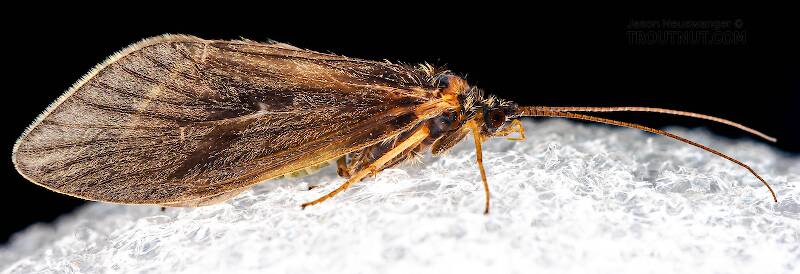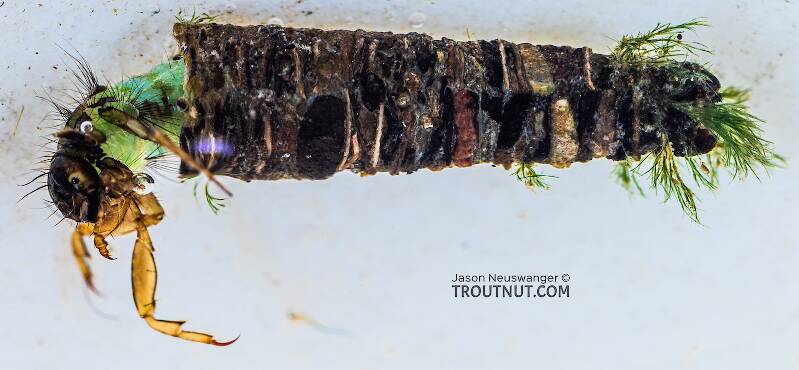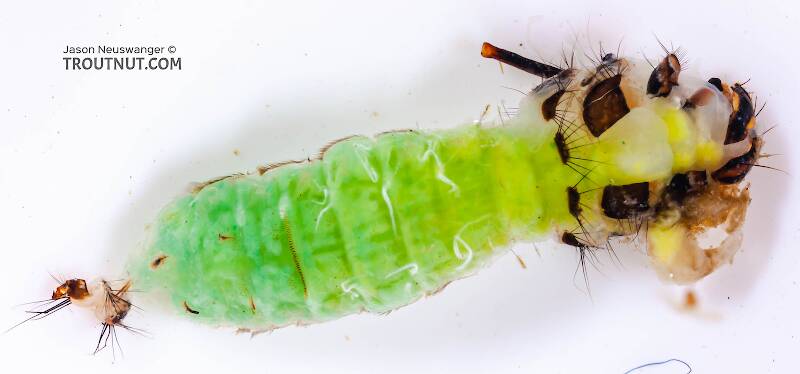
Blue-winged Olives
Baetis
Tiny Baetis mayflies are perhaps the most commonly encountered and imitated by anglers on all American trout streams due to their great abundance, widespread distribution, and trout-friendly emergence habits.
Featured on the forum

Some characteristics from the microscope images for the tentative species id: The postero-lateral projections are found only on segment 9, not segment 8. Based on the key in Jacobus et al. (2014), it appears to key to Neoleptophlebia adoptiva or Neoleptophlebia heteronea, same as this specimen with pretty different abdominal markings. However, distinguishing between those calls for comparing the lengths of the second and third segment of the labial palp, and this one (like the other one) only seems to have two segments. So I'm stuck on them both. It's likely that the fact that they're immature nymphs stymies identification in some important way.

Troutnut is a project started in 2003 by salmonid ecologist Jason "Troutnut" Neuswanger to help anglers and
fly tyers unabashedly embrace the entomological side of the sport. Learn more about Troutnut or
support the project for an enhanced experience here.
Grannoms
This common name refers to only one genus. Click its scientific name to learn more.
Caddisfly Genus Brachycentrus
These are sometimes called Grannoms.
This prolific genus includes the popular eastern early-season Apple Caddis and Grannom hatches. Their life cycles are ideal for the fly angler, and every stage is frequent trout prey.
Note that this species changes color dramatically after it emerges, and imitations of egg-laying adults should be a different color from imitations of emergers. Emergers have pale blonde, almost off-white wings and bright green bodies, while the egg-laying adults have light brownish gray wings and medium green bodies.
Note that this species changes color dramatically after it emerges, and imitations of egg-laying adults should be a different color from imitations of emergers. Emergers have pale blonde, almost off-white wings and bright green bodies, while the egg-laying adults have light brownish gray wings and medium green bodies.

I captured this specimen in the same color as this photograph, during its egg-laying flight. The emergers are much lighter.

This species of Brachycentrus was extremely common in mid-September kick net samples in the Yakima canyon.

The green blob contained in this case is a pupa in the early stages of transformation from larva to the final stage we generally picture and imitate. This specimen and several like it were fixed to a rock I picked up, and each one had the front of its case sealed off, protecting the helpless pupa from predation. It's neat to see the insect part-way through such a radical transformation.
It was very hard to extract this thing from its case, so there's a bit of extra goo near the head from where I accidentally punctured it.
It was very hard to extract this thing from its case, so there's a bit of extra goo near the head from where I accidentally punctured it.
See 4 more specimens...
References
- Jacobus, L. M., Wiersema, N.A., and Webb, J.M. 2014. Identification of Far Northern and Western North American Mayfly Larvae (Insecta: Ephemeroptera), North of Mexico; Version 2. Joint Aquatic Science meeting, Portland, OR. Unpublished workshop manual. 1-176.

